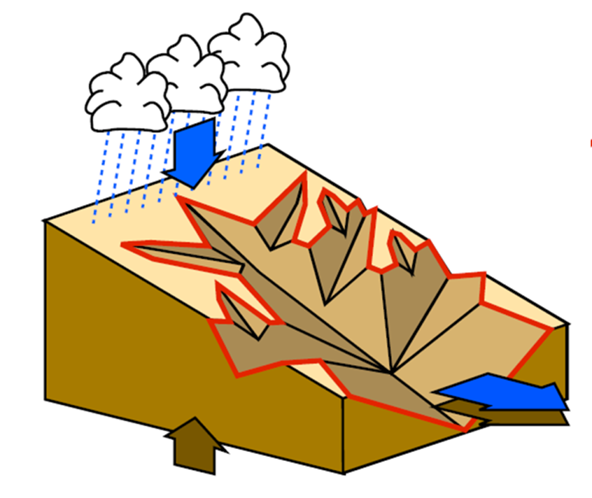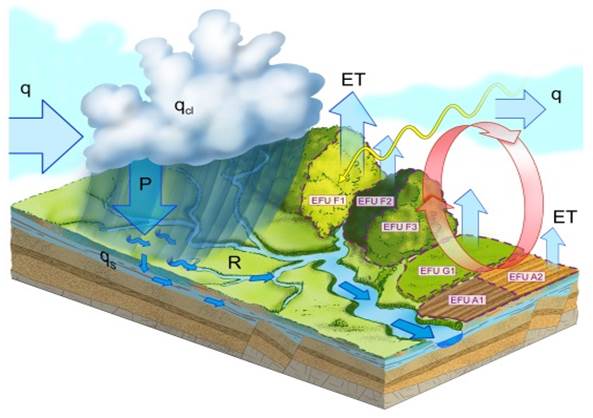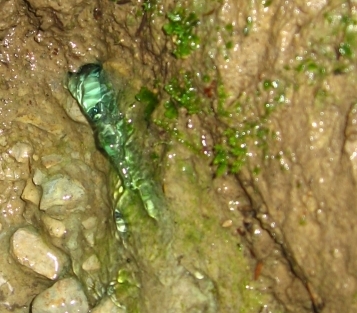Our main research areas
The water cycle is shaped by the landscape and in turn affects its spatial appearance. We study
- if this happens according to fundamental organisation principles from thermodynamics, eg. 'maximum entropy production' (Zehe et al. 2010, Zehe et al. 2013) or 'maximum power' (Kleidon et al. 2013),
- if functional similarity of landscape elements can be defined and characterised with the help of thermodynamic measures (Zehe et al. 2014, Seibert et al. 2017),
- and how we can use functional similarity for hydrological modelling (Loritz et al. 2018).
We apply methods from information theory, machine learning, geostatistics and multivariate statistics to investigate the information content of measurement data and how well hydrological models use this information. On this basis we develop methods for optimising measurement networks for research and practice, as well as modelling concepts which combine information from local data and global knowledge in an optimal way (Ehret et al. 2018, Loritz et al. 2018).
We also develop innovative measurement approaches for hydrologically relevant data such as precipitation (Neuper et al. 2018), snow (Reusser and Zehe 2011) and soil moisture dynamics (Jackisch et al. 2017), as well as a virtual research environment for the management and analysis of environmental data (www.vforwater.de).
Development of hydrological models for research and practice holds a long tradition within our group. This includes
- the physically-based model CATFLOW for water and substance balances for hillslopes and small catchments (Zehe et al. 2001),
- the river basin model FGM which is well-known and established in water management practice (Plate et al. 1988),
- new, object-oriented model concepts based on fucntional units (van Pruijssen et al. 2018) or Lagrangian models for water and substance transport in soils (Zehe and Jackisch 2016, Jackisch and Zehe 2018, Sternagel et al. 2019, 2021).
Accordingly, the applications of our models span the spectrum from fundamental investigations on predictability and model uncertainty (Zehe and Blöschl 2004, Wienhöfer and Zehe 2014) to predictions of pesticide inputs into streams (Klaus and Zehe 2011), to simulation and dimensioning of flood protection measures (Ihringer 2016), to the prediction of the water balance for agriculture in arid regions (Jackisch et al. 2014). Closely linked to the modelling we also develop model diagnostics, eg. TIGER (Reusser et al. 2009) and FAST (Reusser and Zehe 2011) or new metrics for the comparison of time series (Seibert et al. 2016).
Biotic controls play a key role in water and substance turnover and consequently also for environmental quality: Vegetation controls a large proportion of terrestrial water and carbon cycling via gas exchange. Root channels and burrows of small mammals substantially influence water flow paths and therefore also contaminant transport in the soil. Bacteria and fungi control the degradation of contaminants in the environment, however they also contribute to environmental pollution, for example by transforming nitrogen into the greenhouse gas (N2O) (Köhler et al. 2012). Within our group, we are interested in determining the influence of earthworm burrows and other preferential flow paths on the relocation and degradation of pesticides (Klaus et al. 2014) and the influence of transpiration characteristics of vegetation on the water balance in landscapes (Hassler et al. 2018).




